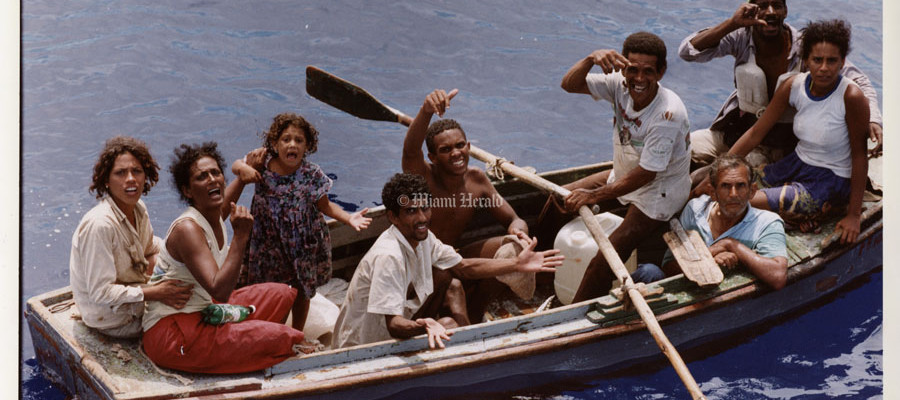Cuban Rafter Crisis
In the early ’90’s, Cuban rafters began to cast off in alarming numbers. On July 13, 1994, Cuban government boats sank a commandeered tugboat that left at least 39 people dead. The next month, outraged Cuban citizens watched the government retake a hijacked ferry in Havana Bay to thwart another escape attempt. Rioting erupted. People chanted anti-government slogans, carried signs that said “Assassin” and “Down With Fidel” and threw stones at police. Castro blamed the U.S. for encouraging hijackings. He unleashed a mass exodus, inviting 30,000 Cubans to leave by launching a junkyard armada. The U.S. Coast Guard set a new record on Aug. 19 with 745 Cubans rescued at sea. President Bill Clinton announced that intercepted rafters would be sent to the Guantanamo naval base, detained indefinitely or sent home. By fall of 1994, refugee camps at Guantanamo naval base swelled. The 30,000 detainees were impatient with life in the dusty tent cities, and concerned that they wouldn’t be allowed to apply for admission to the U.S. Not until May 2, 1995, would Clinton allow most of the detainees into the country.
Buy photos in the Herald store
Buy photos in the Herald store

















































